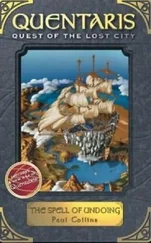Nathan Dole - The Spell of Switzerland
Здесь есть возможность читать онлайн «Nathan Dole - The Spell of Switzerland» — ознакомительный отрывок электронной книги совершенно бесплатно, а после прочтения отрывка купить полную версию. В некоторых случаях можно слушать аудио, скачать через торрент в формате fb2 и присутствует краткое содержание. Жанр: foreign_antique, foreign_prose, на английском языке. Описание произведения, (предисловие) а так же отзывы посетителей доступны на портале библиотеки ЛибКат.
- Название:The Spell of Switzerland
- Автор:
- Жанр:
- Год:неизвестен
- ISBN:нет данных
- Рейтинг книги:5 / 5. Голосов: 1
-
Избранное:Добавить в избранное
- Отзывы:
-
Ваша оценка:
- 100
- 1
- 2
- 3
- 4
- 5
The Spell of Switzerland: краткое содержание, описание и аннотация
Предлагаем к чтению аннотацию, описание, краткое содержание или предисловие (зависит от того, что написал сам автор книги «The Spell of Switzerland»). Если вы не нашли необходимую информацию о книге — напишите в комментариях, мы постараемся отыскать её.
The Spell of Switzerland — читать онлайн ознакомительный отрывок
Ниже представлен текст книги, разбитый по страницам. Система сохранения места последней прочитанной страницы, позволяет с удобством читать онлайн бесплатно книгу «The Spell of Switzerland», без необходимости каждый раз заново искать на чём Вы остановились. Поставьте закладку, и сможете в любой момент перейти на страницу, на которой закончили чтение.
Интервал:
Закладка:
“They must have had a tremendous lot of filling to do.”
“They certainly have, and they have given us fine streets and squares – especially those of La Riponne and Saint-François. It was too bad they destroyed the house of the good Deyverdun, where Gibbon spent the happiest days of his life. It had too many associations with the historic past of Lausanne. They ought to have kept the whole five acres as a city park. What is a post office or a hotel, even if it is named after a man, compared to the rooms in which he worked, the very roof that sheltered him?”
“We have still time enough,” said I, consulting the elevation of the sun; “let us go down by way of the cathedral. I should like to see it in the afternoon light.”
“We can take the funiculaire down; that will get us there quicker.”
We did so, and then the Rue l’Industrie brought us, by way of the Rue Menthon, to the edifice itself.
“I want you to notice the stone of which the cathedral is built,” said Will.
“Yes, it’s sandstone.”
“It is called Lausanne stone. A good many of the old houses are built of it, and it came from just one quarry, now exhausted, I believe. It seems to have run very unevenly. Some of the big columns are badly eaten by the tooth of time; in others the details are just as fresh as if they had been done yesterday. Notice those quaint little figures kneeling and flying in the ogives of the portal; some are intact, others look as if mice had gnawed them. It is just the same with some of the fine old houses; one will be shabby and dilapidated; the very next will be well-preserved.”
“I think it is a rather attractive colour – that greyish-green with the bluish shadows.”
We stood for a while outside and looked up at the mighty walls and the noble portal. We walked round on the terrace from which one gets such a glorious view.
There is something solemn and almost disquieting in a religious edifice which has witnessed so many changes during a thousand years. Its very existence is a curious and pathetic commentary on the superstitions of men. Westerners, interpreting literally the symbolism of the Orient, believed that the world would come to an end at the end of the first millennium. It was a terrible, crushing fear in many men’s minds. When the dreaded climacteric had passed and nothing happened, and the steady old world went on turning just as it had, the pious resolved to express their gratitude by erecting a shrine to the Virgin Mother of God. Before it was completed its founder was assassinated. In the thirteenth century it was thrice devastated by fires which were attributed by the superstitious to the anger of God at the sins of the clergy and of the people. The statue of the Virgin escaped destruction and the church was rebuilt between 1235 and 1275. When it was consecrated, in October, 1275, Pope Gregory X, with the Emperor, Rudolf of Hapsburg, his wife and their eight children, and a brilliant crowd of notables, cardinals, dukes, princes and vassals of every degree, were present. The great entrance on the west was completed in the fifteenth century. The nave is three hundred and fifty-two feet long; its width is one hundred and fifty feet and it is divided into eight aisles. There are seventy windows and about a thousand columns, many of them curiously carved.
The well-known Gate of the Apostles is in the south transept. It commemorates only seven of them, though why that invidious distinction should have been made no one knows. Old Testament characters fill up the quota. These worthies stand on bowed and cowed demons or other enemies of the Faith.
In the south wall is the famous rose-window, containing representations of the sun and the moon, the seasons and the months, the signs of the zodiac and the sacred rivers of Paradise, and quaint and curious wild beasts which probably are visual traditions of the antidiluvian monsters that once inhabited the earth, and were still supposed to dwell in unexplored places.
The vaulting of the nave is sixty-two feet high. It gave plenty of room for the two galleries which once surmounted the elaborately carved façade. One of them was called the Monks’ Garden, because it was covered with soil and filled with brilliant flowers.
Back of the choir is a semicircular colonnade. The amount of detail lavished on the various columns is a silent witness of the cheapness of skilled labour and of the time people had to spend. The carved choir stalls, completed in 1506, were somehow spared by the vandal iconoclasts of the Reformation; but thirty years later Bern, when taking possession of Lausanne, carried off eighteen wagon-loads of paintings, solid gold and silver statues, rich vestments, tapestries, and all the enormous wealth contributed to the treasures of the church.
We were fortunate to find the cathedral still open, and in the golden afternoon light we slowly strolled through the silent fane – the word fane always sounds well. We paused in front of the various historic tombs. Especially interesting was that dedicated to the memory of Otho de Grandson, who, having been charged with having instigated the murder of Amadée VII, was obliged to enter into a judicial duel with Gérard d’Estavayer, the brother of the fair Catherine d’Estavayer whom he expected to marry.
Gérard apparently stirred up great hatred against him. Otho had in his favour the Colombiers, the Lasarraz, the Corsonex, and the Rougemonts; while with Gérard were the Barons de Bussy, de Bonvillar, de Bellens, de Wuisternens, de Blonay and, especially, representatives of the powerful family of d’Illens whose great, square castle is still pointed out, beetling over the Sarine opposite Arconciel. These men were probably jealous of Otho. His friends wore a knot of ribbons on the tip of their pointed shoes, while his enemies carried a little rake over their shoulders.
Otho shouted out his challenge to Gérard: “You lie and have lied every time you have accused me. I swear it by God, by Saint Anne and by the Holy Rood. But come on! I will defend myself and I will so press forward that my honour will be splendidly preserved. But you shall be esteemed as a liar.”
So Otho made the sign of the Cross and threw down the battle-gage. But, although he was undoubtedly innocent, the battle went against him. His effigy is still to be seen in the cathedral. The hands resting on a stone cushion are missing but this probably was due to some accident and not to any symbolism. This all happened about a hundred years before Columbus discovered America – in 1398.
Here, too, lies buried, under a monument by Bartolini, Henrietta, the first wife of Lord Stratford de Redcliffe, minister from England to Switzerland. She died in 1818.
There are monuments also commemorating the Princess Orlova, who was poisoned by Catharine II of Russia, and Duc Amadée VIII, who caused Savoy to be erected into a duchy and became Pope Felix V in 1439, after he had lived for a while in a hermitage on the other shore of the lake. He is not buried in the cathedral but his intimate connection with the history of Lausanne is properly memorialized by his monument.
A city is like an iceberg. Its pinnacles and buttresses tower aloft and glitter in the sun; it seems built to last for ever. But it is not so; its walls melt and flow away and are put to other uses. A temple changes into a palace, and a fortification is torn down to make a park. Where are the fifty chapels that once flanked Notre Dame de Lausanne? Where is the fortified monastery of Saint Francis? Where is the lofty tower of La Grotte, and the moat in which it was reflected?
A great pageant took place in the cathedral in 1476. After Charles the Bold, Duke of Burgundy, had been defeated at Grandson, he collected what remained of his army of 50,000 men, and encamped in the plains of Le Loup. Then on Easter Sunday, he attended high mass. The cathedral was lavishly decorated and a brilliant throng “assisted” at the ceremonies. The Duchess Yolande of Savoy came from Geneva, bringing her whole court and an escort of three thousand horsemen. The Pope’s legate and the emperor’s ambassadors brought their followers, while representatives of other courts were on hand, for the occasion was made memorable by the proclamation of peace between the duke and the emperor. There was a great clanging of bells and fanfare of trumpets and the whole city was overrun with soldiers. The commissary department was strained to feed such multitudes. It is said that an English knight, serving in the duke’s army, was reduced to eating gold; at any rate his skull was found some years ago with a rose noble tightly clenched between its teeth!
Читать дальшеИнтервал:
Закладка:
Похожие книги на «The Spell of Switzerland»
Представляем Вашему вниманию похожие книги на «The Spell of Switzerland» списком для выбора. Мы отобрали схожую по названию и смыслу литературу в надежде предоставить читателям больше вариантов отыскать новые, интересные, ещё непрочитанные произведения.
Обсуждение, отзывы о книге «The Spell of Switzerland» и просто собственные мнения читателей. Оставьте ваши комментарии, напишите, что Вы думаете о произведении, его смысле или главных героях. Укажите что конкретно понравилось, а что нет, и почему Вы так считаете.












